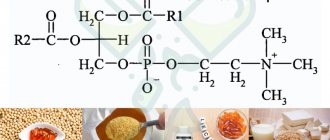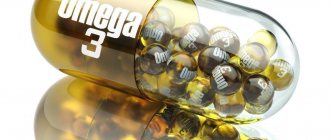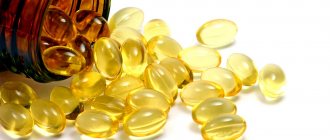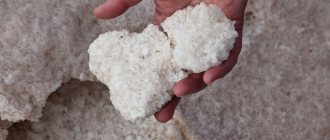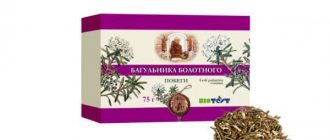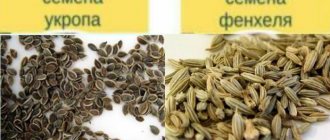Cleansing the body and getting rid of toxins are processes necessary for full functioning. Often the mechanisms responsible for their implementation fail. Then you have to look for means that help cope with this problem. Scientists have found that liquid chlorophyll can deactivate carcinogens accumulated in the body, as well as prevent the process of DNA degeneration. Plant pigment has other beneficial properties, which we will get acquainted with later.
What is chlorophyll?
Chlorophyll is a plant pigment necessary for photosynthesis - the process of formation of organic substances from inorganic substances with the participation of sunlight. Chlorophyll is one of the most important elements for the plant and entire biological world.
During the process of photosynthesis, carbon dioxide is converted into chemical bonds of carbohydrates, and oxygen is released, which is necessary for the life of all life on Earth and the biocenosis as a whole. The process of photosynthesis can rightfully be called the greatest miracle of nature.
It is chlorophyll (Greek chloros - green, phyllon - leaf) that colors plants green. Its amount in plants ranges from 1.7 to 5.0% (by dry weight).
How to isolate chlorophyll at home
Not only chemists or industrial workers can isolate this useful substance. The process can be carried out at home. You don't need anything super complicated for this. To begin with, it is important to prepare any fresh green leaves. It could be spinach, nettle, broccoli or anything else.
Lightly chop the selected greens and place in a glass vessel (in extreme cases, enamel dishes will do). Pour the contents of the container with a water-alcohol solution or regular vodka. Then arrange a water bath for the container with the components. After a certain time (depending on the characteristics of the selected leaves), the solution will begin to turn green, and the leaves will begin to lose their natural color. If they become completely discolored, it means the pigment has liquefied. The resulting bright green substance is the isolated chlorophyll.
Attention! The green component is very unstable when exposed to light and air. Therefore, it is not advisable to keep the finished mixture for a long time. Pretty soon it will lose its bright color and take on a dirty green color.
Chlorophyll Research
The elemental composition of chlorophyll was first established in 1914 by the German organic chemist, Nobel Prize winner in chemistry, Richard Martin Willstätter. In 1940, another German organic chemist, also a Nobel Prize winner, Hans Fischer, completely established the structural formula of chlorophyll. And in 1960, another Nobel laureate in chemistry, American organic chemist Robert Woodward, managed to synthesize chlorophyll in the laboratory.
Compare the structure of the chlorophyll and hemoglobin molecules
Scientists have determined that the chlorophyll molecule is very similar in structure to the hemoglobin molecule, the most important element of blood. The only difference is that the central atom of chlorophyll is magnesium, and that of hemoglobin is iron.
Chlorophyll came to be called the blood of green plants.
Nutritional value of chlorophyll and its chemical composition
| Nutritional value of chlorophyll (per 5 g) | |
| Calorie content | 15 kcal |
| Squirrels | 0 g |
| Fats | 0 g |
| Carbohydrates | 4 g |
| Alimentary fiber | 0 g |
| Nutrients (per 5 g) | |
| Calcium | 9 mg |
| Sodium | 5 mg |
| Copper | 4 mg |
| Vitamin C | 8.1 mg |
| Vitamin B4 | 2.8 mg |
| Vitamin B3 | 1.3 mg |
Sources of chlorophyll
Products containing chlorophyll can be called superfoods, as they make an invaluable contribution to maintaining and strengthening human health. There are two main sources of chlorophyll: natural sources and dietary supplements based on them.
Natural sources of chlorophyll include leafy greens, some vegetables, and algae. Large amounts of chlorophyll are found in alfalfa, nettles, lettuce, spinach, sorrel, dill, parsley, celery, broccoli, Brussels sprouts, seaweed (spirulina and chlorella), wheat and barley sprouts.
However, one should take into account the fact that the amount of chlorophyll in greens and vegetables decreases during long-term storage, thawing after freezing, and during cooking.
For example, the chlorophyll content of frozen spinach decreases by about 35% after it is thawed and by another 50% after boiling or steaming.
The lack of chlorophyll in the human diet can be compensated for by biologically active food supplements, both in capsule and liquid form. Juice is obtained from fresh leaves of plants that serve as raw materials, which is dried using a special technology, then either packaged in capsules or used to prepare a solution. In the latter case, the product is better absorbed and the healing effect occurs faster.
Green smoothies: what are the benefits?
Cocktails made from green vegetables and herbs are an effective source of mineral salts, trace elements, vitamins, fiber and, of course, chlorophyll. They contain all the components necessary for active life. And in addition, they cleanse the body of toxins, heavy metals and other poisons.
This tasty product is easily absorbed by the body, preventing various diseases, eliminating excess weight, and filling with energy. Green smoothies are a good tonic. They are extremely necessary for children, expectant mothers and elderly people.
What is liquid chlorophyll
Liquid chlorophyll is a dietary supplement, which is a solution of chlorophyllin. Chlorophyllin is a water-soluble compound obtained in the laboratory from chlorophyll by extraction.
The source of liquid chlorophyll is usually alfalfa , an ancient herbaceous plant growing on 5 continents and in more than 80 countries.
Why is alfalfa most often the raw material for the industrial production of liquid chlorophyll?
- Firstly, alfalfa is one of the most chlorophyll-rich plants.
- Secondly, the concentrate made from alfalfa contains all the minerals and chemical elements necessary for the body, and many rare biologically active substances.
The plant owes its rich composition to its unusually developed root system. While simple vegetable crops are content with superficial layers of soil that are stingy with nutrients, alfalfa, thanks to its powerful rhizome, is able to extract valuable nutrients from deep layers of soil.
Alfalfa is a source of liquid chlorophyll
The properties of alfalfa have been well studied. The plant is a rich source of vitamins (A, C, D, E, K), vital minerals (magnesium, iron, calcium, potassium, etc.), trace elements (copper, manganese, molybdenum, boron, cobalt, etc.), fatty acids acids
Liquid chlorophyll has a rich emerald color, which remains stable during long-term storage. As a dietary supplement, liquid chlorophyll has been widely used throughout the world for more than half a century.
How to make a drink with chlorophyll
The most popular and easiest to prepare is a cocktail of leafy vegetables and healthy herbs. For example, nutritionists advise making a mixture of dill, parsley, spinach, sorrel, lettuce, celery, beet tops, chard, carrot greens, nettle leaves or dandelion. Grind all these components (or some of them) in a blender and dilute with water to the desired thickness.
You can also make combination cocktails. To do this, take 2 parts of leafy greens and 3 parts of emerald vegetables or fruits. Grind everything in a blender and add water to the resulting mixture. If you skip the liquid dilution step, you can get a green puree, which is also suitable for replenishing chlorophyll reserves.
By the way, when choosing greens for a cocktail, it is better to give preference to rich green specimens. Such products contain the most useful substances. The second advice from nutritionists is that it is advisable to alternate the components of the drink.
Options for cocktail ingredients:
- salad, banana, water;
- dill, lettuce, banana, water;
- mint, lettuce, pear, water;
- nettle, parsley, banana, water;
- basil, banana, plum, water;
- parsley, dill, tomato, lemon, water;
- lettuce, ginger, carrots, orange, water;
- parsley, dill, sauerkraut juice, tomato, sugar, water;
- parsley, dill, celery, cucumber, carrots, water.
But these are only options from possible mixtures. Everyone chooses the components of a healthy drink for themselves, taking into account their tastes. However, it is not so important what exactly is included in the finished product, the main thing is that it is green in color and contains a lot of chlorophyll and other useful components.
The benefits of chlorophyll for our body
Swiss physician Maximilian Oskar Bircher-Benner (1867-1939), a pioneer in the field of nutritional research, wrote that the sunlight accumulated in plants gives them great value.
Green leaves and fruits with the maximum concentration of sunlight should be the basis of daily nutrition, since the chlorophyll they contain has a multifaceted beneficial effect on the human body. In essence, Bircher-Benner laid the foundations for new beliefs about proper and healthy eating.
Benefits of chlorophyll for blood
It has been proven that chlorophyll is effective for anemia, as it causes activation of hematopoiesis. Chlorophyll stimulates the bone marrow, resulting in increased production of red blood cells, the most numerous cells in the blood.
Chlorophyll activates the action of enzymes involved in the synthesis of vitamin K, which is necessary for normal blood clotting. In addition, liquid chlorophyll itself is rich in natural vitamin K. Taking liquid chlorophyll is indicated for nosebleeds and heavy menstrual bleeding.
As a detoxifier, chlorophyll helps cleanse the blood of toxins and excess medications.
Antioxidant and detoxifying properties of chlorophyll
Chlorophyll is a natural antioxidant. Like all antioxidants, it fights free radicals and carcinogens that threaten the integrity of DNA and provoke the development of various pathological processes in the body, including the uncontrolled growth of malignant cells.
Chlorophyll is able to resist chemical carcinogens and food toxins, reduces the severity of side effects from the use of drugs, counteracts radiation damage, protects against the negative effects of ultraviolet radiation, and reduces risk factors from smoking.
How does it work
Chlorophyll is found in all greens, including some vegetables, algae and even bacteria. And if chlorophyll is an exclusively natural substance, then chlorophyllin is a semi-synthetic mixture produced in laboratories. Its other name is liquid chlorophyll. It has been used as a beneficial supplement for over 50 years. Most often - for the treatment of skin diseases, wound healing, and also to restore the functioning of the digestive organs.
As mentioned, chlorophyll serves as a natural substance that protects DNA from damage caused by toxins such as aflatoxin. And the chlorophyllin supplement neutralizes the performance of oxidizing agents, resulting in a reduction in oxidative damage to cells caused by carcinogens, ultraviolet light or radiation.
Researchers studying plants at the botanical garden of a research institute in India made an interesting discovery. It turned out that chlorophyll from fresh green leaves has an anti-inflammatory effect and protects against toxins and dangerous bacteria.
Side effects of chlorophyll
Chlorophyll and chlorophyllin are non-toxic and usually do not cause side effects. In very rare cases, an overdose of chlorophyllin can cause an allergic reaction, stomach upset, and diarrhea.
However, it is worth paying attention to some limitations in the use of chlorophyll supplements:
- To avoid a false positive result when taking a hemocult test (stool test for occult blood), you should exclude foods and dietary supplements containing chlorophyll from your diet 3 days before the test.
- Some medications that increase sensitivity to sunlight (photosensitizing drugs) may interact with chlorophyll. This means that taking these drugs with chlorophyll may increase your skin's exposure to ultraviolet radiation and cause sunburn or an allergic reaction such as a rash.
Indications for use and instructions for use
A number of studies have confirmed the effectiveness of liquid chlorophyll in the complex treatment of chronic constipation and bloating. It has been established that the active compound can reduce body odor, urine and feces (). Liquid chlorophyll has proven to be an effective treatment for mild to moderate acne. It also helps get rid of pronounced pores. For the treatment of defects on the facial skin, the product is used for 3 weeks (). You can understand why else you should drink liquid chlorophyll by carefully studying its mechanism of action.
The pigment is prescribed for:
- disruption of the functioning of the pancreas;
- diagnosing pancreatitis;
- the appearance of anemia during menstruation or frequent nosebleeds;
- sinusitis therapy;
- hormonal imbalance;
- bleeding gums;
- detection of swelling and redness on the skin.
The indication for the use of liquid chlorophyll is leukopenia. This type of disease is caused by various reasons. Research has confirmed the effectiveness and safety of the product ().
Chlorophyll NSP
Chlorophyll NSP is liquid chlorophyll made from environmentally friendly alfalfa using a unique technology with complete preservation of active ingredients. One teaspoon (5 ml) of Liquid Chlorophyll NSP contains 14.9 mg of chlorophyll (sodium chlorophyllin), which is 15% of the adequate daily requirement, and 4.35 mg of spearmint oil, which enhances the antiseptic effect of chlorophyll and makes the supplement light menthol taste. The dietary supplement is manufactured according to the GMP standard. The supplement does not contain sugar, preservatives or dyes.
Review by V. Antilevsky, Ph.D., about Liquid Chlorophyll NSP
How to drink chlorophyll?
Liquid chlorophyll NSP is recommended to take 1 teaspoon, diluted in a glass of clean drinking water, 1-3 times a day 15-20 minutes before meals or in between meals. To enhance the effect, it is advisable that the water be slightly warm (but not hot!). For colds and acute poisoning, the dose can be increased 2-3 times. (Before use, please consult your healthcare professional)
Liquid chlorophyll NSP is a unique product for daily use. Regular intake of chlorophyll will improve your health and protect against many risks.
Author: general practitioner Natalya Dubrovskaya
Before using any medications, you should consult your doctor. When copying texts, a hyperlink to the source site is required. Use of materials without the approval of the author is prohibited.
Daily norm
If we consider that high doses of chlorophyll are not stored for long in fresh vegetables, then the high popularity of food additives based on this substance becomes understandable. Daily doses of dietary supplements in tablet form range from 100-300 mg per day.
Liquid chlorophyll is taken a few drops twice a day (in a glass of water). The resulting bright green drink will add energy and improve your well-being.
It is also easy to prepare homemade cocktails from green vegetables and herbs, which are recommended to be taken 3-4 times a day, 150-200 ml.
Chlorophyll for pregnant women and children
Chlorophyll is a completely safe food additive, as mentioned above. It can be taken by almost all groups of the population. However, some people should consult a specialist first - contacting a doctor is necessary in cases where the patient is diagnosed with serious illnesses or other stressful conditions for the body, for example, pregnancy. Thus, it is not recommended for pregnant women to introduce chlorophyll into their diet in two cases:
- there was a threat of termination of pregnancy;
- The mother was found to have an individual intolerance to mint and menthol-containing substances (which are present in medications with chlorophyll).
In other cases, chlorophyll does not pose a danger to either the body of a pregnant woman or the body of a woman during lactation.
Chlorophyll is recommended for children in the form of a liquid medicine, which allows them to quickly absorb all the beneficial substances. However, experts insist that before starting to use the supplement, it is necessary to consult a pediatrician in order to choose the correct dosage for the baby and to exclude side effects.
It is especially recommended for those who live in large cities and northern regions to think about consuming chlorophyll. Experts recommend introducing the supplement into your diet during ARVI epidemics.
Contraindications to the use of chlorophyll and possible harm from its use
Chlorophyll belongs to the category of safe dietary supplements, but there are still groups of people who need to be careful with its use. These include:
- people with hypersensitivity to eucalyptus leaf extract or other excipients related to the drug being taken;
- teenagers and children, pregnant and lactating women - they should consult a specialist before introducing chlorophyll into their diet;
- people with liver disease, traumatic brain injury and alcohol dependence.
Reviews about the use of chlorophyll
Anna
My family and I decided to supplement our diet with chlorophyll during the winter. The supplement tastes good and is easy to drink. I’ve had gastritis since childhood – it’s not fatal, but it does cause discomfort from time to time. Chlorophyll helped alleviate the condition - the stomach practically does not hurt, the body no longer reacts to any food (even fatty and spicy) with a riot in the form of vomiting and wild pain.
Natalia
Since childhood, I have had problems with my teeth – as soon as caries forms, I have to run to the dentist. I heard that chlorophyll helps in such cases, I decided to try it. I bought a special mouthwash and used it three times a day. And indeed, the inflammation of the gums has passed, caries appears much less frequently, and the bad breath has disappeared.
Elena
Chlorophyll was recommended by a friend. She praised the beneficial properties of chlorophyll and described it as a magical remedy for all ailments. I believed it, bought an oil solution, and started taking it as a supplement for weight loss. I hoped that chlorophyll would speed up my metabolism. Instead of decreasing the mark on the scale, I achieved the diametrically opposite effect: the more chlorophyll I took, the bigger I became. I didn’t find any positive changes after it.
Preparations based on chlorophyll and their cost
In pharmacy windows, chlorophyll is present in a variety of forms: for example, you can find an alcohol solution, tablets, spray and oral product based on it.
| Name of the drug | Cost of the drug |
| Chlorophyll tablets with vitamin C (0.8 g, 20 pcs.) | 180 rub. |
| New Food Liquid Chlorophyll (473 ml) | 2400 rub. |
| Chlorophyll-based mouthwash from Vialine (200 ml) | 300 rub. |
| Chlorophyll oil solution (2%, 20 ml) | 200 rub. |
| Alcohol solution of chlorophyll (1%, 50 ml) | 330 rub. |
The cost of chlorophyll-based drugs may vary depending on the manufacturer, pharmacy and city of residence, but usually this difference is insignificant.
You can purchase chlorophyll at any pharmacy or online store.
Being in nature
Chlorophyll is contained by all organisms that are autotrophs. First of all, these are plants of all systematic groups. Thus, all algae feed autotrophically. Therefore, they can only live at a depth to which sunlight penetrates. Do algae, whose thallus is colored red, brown or golden, contain chlorophyll? Undoubtedly. It’s just that, in addition to the green pigment, their cells also contain dyes of other colors. They determine the color of the algae, but it is chlorophyll that performs the function of photosynthesis.
In addition to plants, photoautotrophic bacteria and protozoa contain green pigment. For example, green euglena. This single-celled organism contains one large chloroplast. In the absence of conditions necessary for photosynthesis, euglena switches to a heterotrophic mode of nutrition.



